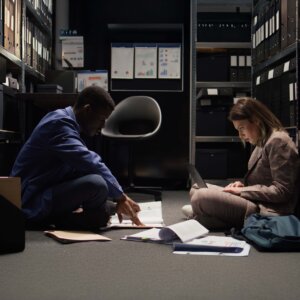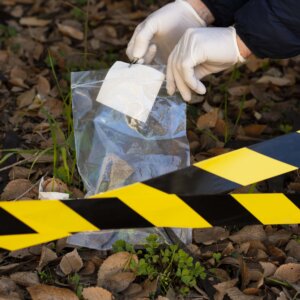
The Art of Security: Insights from Regina Lombardo on Building a Scalable, Intelligence-Driven Security Program
In today’s dynamic environment, security leaders face a complex and evolving threat landscape. From physical breaches to cyberattacks, the risks that organizations face are becoming more sophisticated and challenging to manage. To ensure the safety and security of employees, assets, and reputation, organizations must adopt a proactive, yet scalable approach to security.
This article dives into the security program developed by Regina Lombardo, an experienced Chief Security Officer (CSO), who has built a robust and scalable security program that leverages cutting-edge technology with a continuous and evolving application of best practices. By examining these security practices, security leaders can gain valuable insights into how to enhance their own programs.
Regina Lombardo: From ATF Director to CSO for High-Profile Events & Priceless Assets

Regina Lombardo has had an inspiring career that establishes her wealth of experience in the safety and security space. Before becoming a CSO, Lombardo served as the first female Director of the Bureau of Alcohol, Tobacco, Firearms, and Explosives (ATF), where she spearheaded significant initiatives aimed at enhancing national security and public safety. With decades of federal law enforcement experience, Regina’s leadership is characterized by her forward-thinking approach to security, combining traditional law enforcement practices with the latest technology.
Today, the security challenges faced by Lombardo are significant. Her current role as CSO for The Met, means she has to deal with hosting a large volume of visitors daily, with numbers fluctuating greatly and occasionally swelling to tens of thousands on peak days. In addition to managing large crowds, she also has to manage the protection of extremely high-value assets, while simultaneously ensuring the safety of staff and visitors.
The Metropolitan Museum of Art’s security Department, with its over 500 personnel, operates on a scale comparable to a midsize police department encompassing a range of specialized roles including intelligence analysts operations specialists, investigators, and incident response teams. With dedicated managers overseeing various divisions, the department ensures the safety of millions of visitors, protects priceless artifacts, and coordinates security efforts with local law enforcement—mirroring the structure and complexity of a municipal police force.
CSO Lombardo’s Approach to Managing Security
CSO Lombardo has implemented a security program that prioritizes a collaborative, data-driven approach. “Resource allocation should always be based on the data,” she states. She emphasizes the importance of having a well-trained and efficient security team on the front lines, supported by a robust intelligence-gathering and analysis operation behind the scenes.
CSO Lombardo’s approach is built on two key pillars:
- Front-line efficiency: Ensuring the security team can respond swiftly to real-time events and threats.
- Back-house intelligence: Using data and technology to proactively prevent incidents before they occur.
These pillars form the backbone of the overall security strategy, and are the foundation upon which she manages such a high-stakes security program. To implement this strategy, CSO Lombardo focuses on building upon the foundation with three critical elements: people, processes, and technology. Each of these elements are carefully considered as part of a continuous process to ensure a holistic and constantly evolving approach to modernizing security operations.
1. Building A Security Workforce
CSO Lombardo’s organization requires a large security team. She has taken time to restructure the team by prioritizing the right talent and fostering a collaborative environment. Her hiring strategy is centered around:
- A diverse and skilled team: She selects individuals with a mix of law enforcement, military, and private security experience.
- Clear roles and responsibilities: CSO Lombardo rewrote and defined job roles to find people specialized in certain areas or incidents.
- Collaboration: Finding people skilled in communication is key within the security team and for work with external partners, such as local law enforcement and event coordinators.
- Clear communication: Team members are trained to work seamlessly together, ensuring quick responses to any incidents.
Due to the nature of her organization, CSO Lombardo’s team has to frequently partner with local and federal law enforcement agencies, and multiple security teams for visiting high-profile individuals, making effective communication and collaboration absolutely crucial. CSO Lombardo has enhanced team effectiveness by creating specialized roles that align with individual skills, such as appointing a Fire Safety Manager who draws on their prior Fire Department experience.
This restructuring has clarified responsibilities within her team and established clear points of contact for external partners. Even details like managing the security aspects of external vendors are addressed by dedicated team members, showcasing a proactive and comprehensive approach to the organization’s unique security challenges.
2. Tech-Driven Safeguards
Once CSO Lombardo assembled the right team, she turned her attention to technology. Technology plays a critical role in security operations. Her organization leverages a diverse and innovative number of tools to enhance both front-line efficiency and back-house intelligence.
Incident reports, surveillance footage, and sensor data are recorded and analyzed to spot patterns and trends and to mitigate future risks on a day by day basis and during special events. Below-listed are just some of the various types of data inputs tracked:
- Security Breaches
- Asset Handling
- Flooding Incidents
- Water Leaks
- Fire Hazards
- Asset Damage
- Chemical Spills
- Visitor Falls
The organization also hosts a significant number of events—374 just last year—and often after the facility closes for the public. Events include everything from dinners, cocktail parties and banquets, to more high-security events with VIPs. In addition to securing each event, they also track the costs that go into protecting it, such as when it is, who is attending, and the resources required to protect them.
CSO Lombardo and her team utilize a large network of cameras across the property they secure. They also incorporate a variety of other unique safety measures, as their organization has a unique goal to balance high-tech security with aesthetics and public perception.
CSO Lombardo ensures her team has access to a variety of technologies to collect, analyze and act upon various types of data, including Kaseware. Kaseware functions as a centralized system for tracking and managing security incidents. This helps to improve communication and collaboration among security team members and enables faster response times.
All of this data is then used to generate customized reports that help CSO Lombardo and her team identify patterns and trends to better allocate resources and improve security operations. By blending the right technology with operational needs, CSO Lombardo ensures a seamless, secure experience for all visitors without compromising her organization’s atmosphere.
3. Structured Security Protocols
To complement her people and program’s technological advancements, CSO Lombardo has established structured security protocols that ensure every aspect of operational tempo is meticulously managed. These processes are the framework for maintaining safety and accountability, while addressing both current challenges and emerging threats. These include:
- Incident tracking and reporting: Real-time data capture ensures that every event is documented for swift resolution and future analysis.
- Proactive risk management: Continuous monitoring of security data helps anticipate risks before they escalate. And proactive risk management is required when it comes to logistics of transferring assets.
- Chain of Custody for asset transportation: Every asset is carefully tracked, with its movement recorded on a chain of custody document, before, during, and after transport.
New threats are also constantly emerging that the organization has to monitor, understand, and adapt to, such as vandalism, disruptions, or actions that could damage assets. CSO Lombardo has implemented an incident-based command structure that allows security operations to be both reactive and proactive.
Over three years, CSO Lombardo has strategically planned, restructured, and integrated technology to elevate the security program. She remains dedicated to refining her strategies as new challenges arise, ensuring that security protocols remain ahead of emerging risks. This commitment underscores her focus on protecting the organization’s invaluable assets and ensuring the safety of visitors and staff.
Lessons Learned and Future Growth
CSO Lombardo has overseen the implementation of significant enhancements to the security program for her organization. Her leadership has helped develop a more robust, scalable, and efficient security operation.
People and Processes
The security program is built on a strong foundation of people and processes. CSO Lombardo has focused on hiring the right talent for the right job and implementing clear processes to ensure that the security team is well-equipped to handle large crowds and complex security needs. Her hope is to create a clear succession plan which helps develop her team to reach their highest potential.
Systems and Technology
The organization is committed to using cutting-edge technology to support its security operations. While CSO Lombardo feels the people and processes are in a solid place, there’s constantly new and evolving threats that require new technologies. She works to constantly be at the forefront of that in exploring new solutions. This will become increasingly more important as her organization expands its footprint.
Artificial Intelligence
CSO Lombardo is exploring the use of artificial intelligence (AI) to improve security. AI-powered cameras can be trained to identify potential threats and ignore non-threatening activity. Kaseware also provides a variety of AI-driven tools that help improve efficiencies of data and incident management.
Collaboration with Other Institutions
The security program CSO Lombardo has developed is considered a leader in the industry. Her and her team are collaborating with other institutions to share best practices and improve security standards across the sector.
As CSO Regina Lombardo plans the next phase of security strategy, her team relies on Kaseware to streamline operations and drive an intelligence-led approach. The Met hosts many high-profile events, including the world-famous Met Gala, relying on its professional security team to ensure a safe and successful experience. Their expertise in crowd management and protection helps maintain the events’ exclusivity and prestige.
The Met leverages technology in every aspect of event planning, including AI for access control and breach detection, intelligence from social media platforms, and a weapons detection system for all guests. All this data is captured in Kaseware, the museum’s case management system, which helps identify trends and patterns and serves as a central hub for all Met guidelines, policies, and procedures.
To learn more about Kaseware: https://www.kaseware.com/








